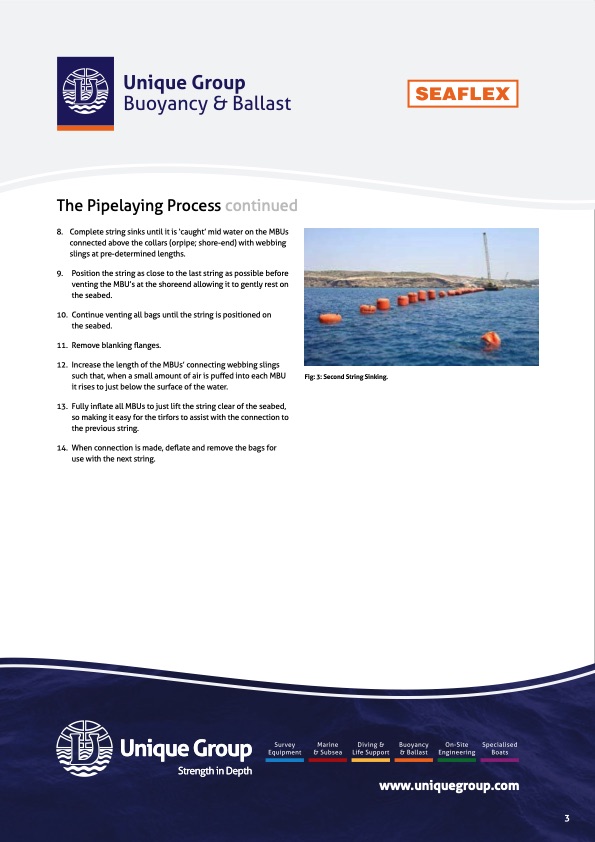
PDF Publication Title:
Text from PDF Page: 004
The Pipelaying Process continued 8. Complete string sinks until it is ‘caught’ mid water on the MBUs connected above the collars (orpipe; shore-end) with webbing slings at pre-determined lengths. 9. Position the string as close to the last string as possible before venting the MBU’s at the shoreend allowing it to gently rest on the seabed. 10. Continueventingallbagsuntilthestringispositionedon the seabed. 11. Removeblankingflanges. 12. IncreasethelengthoftheMBUs’connectingwebbingslings such that, when a small amount of air is puffed into each MBU it rises to just below the surface of the water. 13. FullyinflateallMBUstojustliftthestringclearoftheseabed, so making it easy for the tirfors to assist with the connection to the previous string. 14. Whenconnectionismade,deflateandremovethebagsfor use with the next string. Fig: 3: Second String Sinking. www.uniquegroup.com 3PDF Image | Use of Buoyancy for Installation of HDPE

PDF Search Title:
Use of Buoyancy for Installation of HDPEOriginal File Name Searched:
Seaflex-Buoyancy-HDPE-Pipelines.pdfDIY PDF Search: Google It | Yahoo | Bing
Development of a solar powered Electric Ship The Electricship website originally started off as a project to develop a comprehensive renewable, affordable, modular electric ship... More Info
Modular Boat Hull Composite The case for a unsinkable, modular composite hybrid boat hull... More Info
MS Burgenstock Hybrid Electric Catamaran Lake Lucerne Unique shuttle servicing Lucerne to the Burgenstock Resort... More Info
Ground Power Unit GPU Powered by Lithium Ion Batteries The goal of the Ground Power Unit is to provide a readily accessible, modular, ready-to-power solution for remote power... More Info
| CONTACT TEL: 608-238-6001 Email: greg@electricship.com | RSS | AMP |